Piping: It's a Little Line of Color with a Big Punch for a T-shirt Quilt
March 5th, 2018
3 min. read
By Andrea Funk
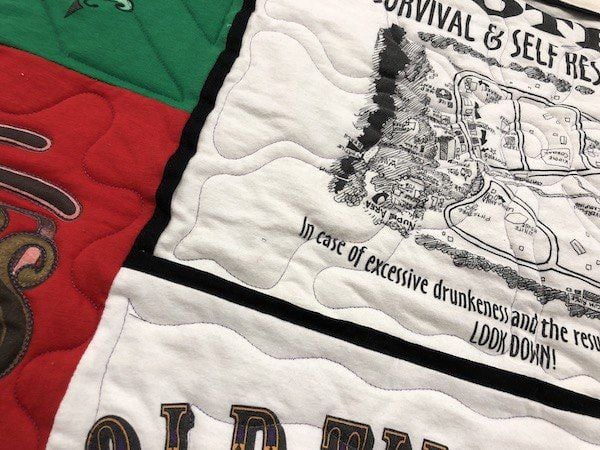
What is Piping in a Quilt?
Piping is a folded strip of fabric added to a seam between two pieces of material. Typically, the piping is a contrasting color which adds a pop of color and draws your eyes to that spot on the quilt.
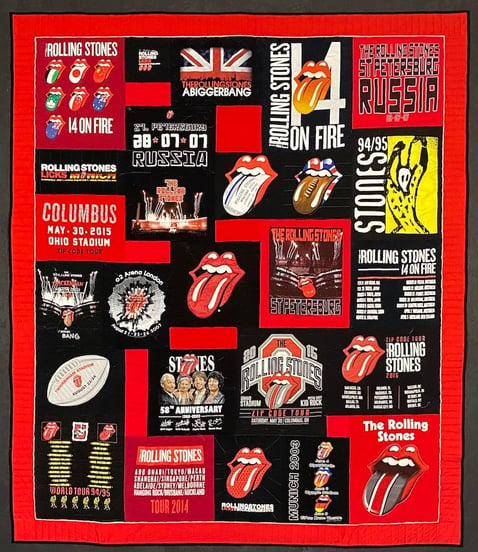 If you are looking for a way to make your T-shirt quilt standout, you might consider adding piping. Piping is an embellishment that is sewn into a seam to bring emphasis to or separate two elements of a quilt.
If you are looking for a way to make your T-shirt quilt standout, you might consider adding piping. Piping is an embellishment that is sewn into a seam to bring emphasis to or separate two elements of a quilt.
Piping is a folded strip of fabric added to a seam between two pieces of material. Typically, the piping is a contrasting color which adds a pop of color and draws your eyes to that spot on the quilt.
Once we began adding borders to our T-shirt quilts, we discovered how much fun we could have adding piping. Through experimentation and play, we developed the experience and expertise to use piping. We are now offering this as an option for your quilt.
In the Rolling Stones T-shirt quilt here, we have piping between the red border and the inside of the quilt. This keeps the border from visually getting lost against a red block on the side of the quilt.
Where and how can piping be used in a T-shirt Quilt?
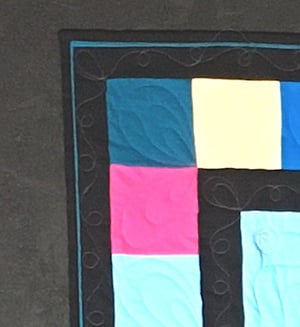 Bindings
Bindings
When piping is put between your quilt and its binding, you will see a little line of color along the binding. This can give a quilt an additional framing element. And it just looks cool.
Borders
We have also used piping to separate the body of a quilt from its border. This little shadow line helps to divide the quilt into its two parts – the body and border.
We have also used piping to separate out a border made from identical T-shirts. This allows your eye to know that everything above and below that line is a border. Without this line, using a row of identical or similar shirts along the top and or bottom loses its effectiveness.
Individual Blocks
Do you have one special shirt that you want to standout from all the other T-shirts in your quilt? Piping added around an individual block that is centered in the quilt will make that block prominent and the focal point of your quilt. In the photos here you can see how this white block jumps out from the other blocks.
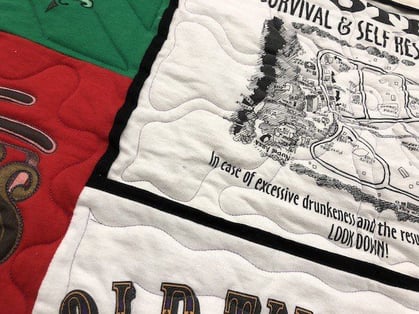
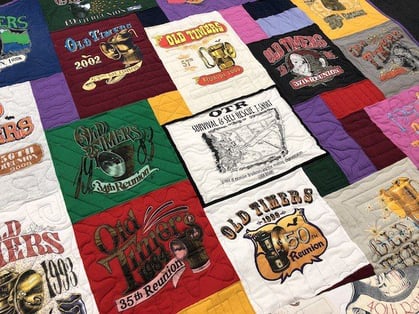
To learn more about having a quilt made from your T-shirts, download our free T-shirt Quilt Buyer's Guide.
It's a great place to learn about the different styles and quality of T-shirt quilt.

What are the cost of adding piping to a T-shirt Quilt?
There are two main costs associated with adding piping: labor and materials.
 Labor – This is the main costs of piping. Some of the steps include finding the correct color, cutting the thin strips and sewing the pieces into the quilt. The sewing is actually a two-step process. The first step is to sew the piping in the seam.
Labor – This is the main costs of piping. Some of the steps include finding the correct color, cutting the thin strips and sewing the pieces into the quilt. The sewing is actually a two-step process. The first step is to sew the piping in the seam.
The second step, which is trickier, is to top stitch the piping so it lays smooth and flat. This top stitching shows on the final quilt so it must be sewn very neatly and evenly.
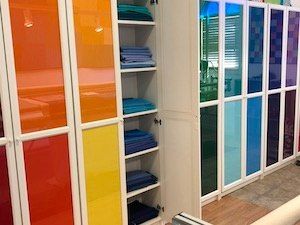 Material – There isn’t a lot of material used in piping. Most of the time we are able to use long thin strips from our stash of fabric. But if we don’t have the color you want for the piping, then we would have to cut and wash fabric to use.
Material – There isn’t a lot of material used in piping. Most of the time we are able to use long thin strips from our stash of fabric. But if we don’t have the color you want for the piping, then we would have to cut and wash fabric to use.
Your cost – We charge 40¢* per inch. *Prices effective until 12/31/25. Click here for more about special services pricing.
For a multi-use size quilt that is 60″ x 72″ with piping under the binding, we would calculate the perimeter size of the quilt. The math is: (60+ 72) x 2 = 264″ x .40 = 106. Thus, the cost of the piping would be $106. It's that much work!
If you want to add piping to a centered block that is 16″ x 16″ the cost would be (16 + 16) x 2 = 64″ x .4 = $26.
Should you add piping to your quilt?
Consider adding piping if:
- You would like your quilt to stand out.
- You like how piping looks.
- Your budget allows you to add piping.
Don’t opt for piping if:
- Your budget does not permit the additional cost.
- You don’t like the look of piping.
See more photos of quilts with piping below.
To learn more about having a quilt made from your T-shirts, download our free T-shirt Quilt Buyer's Guide.
It's a great place to learn about the different styles and quality of T-shirt quilt. 
This quilt has a thin teal piping along the binding.
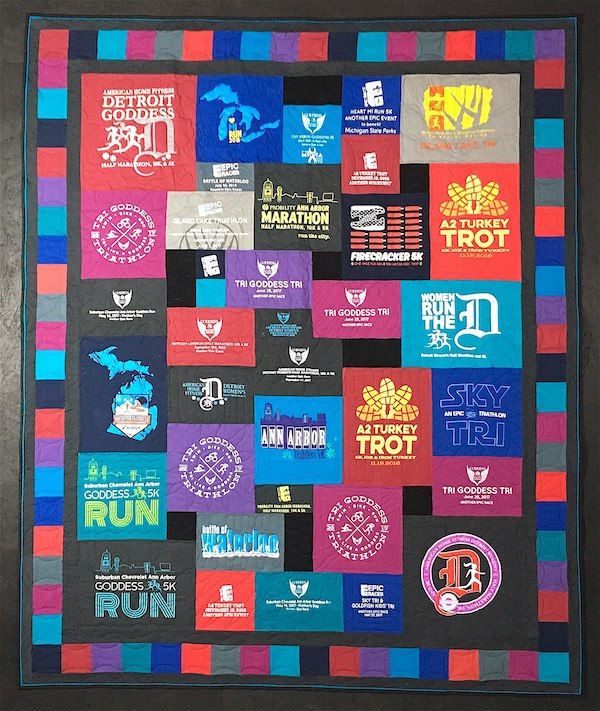
This quilt is a very thin purple piping between the body of the quilt and the border as well as between the border and binding.
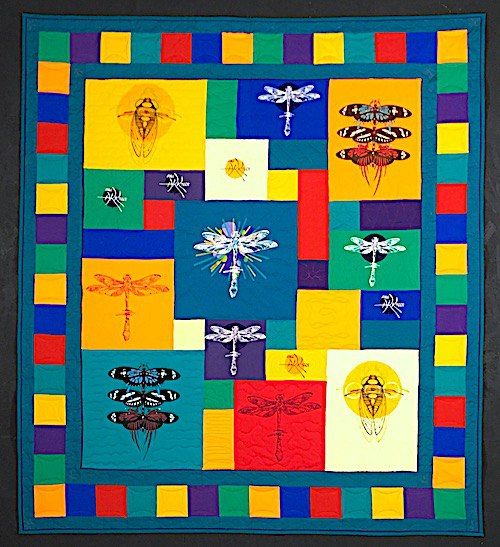
This is an example of using piping to divide a top and bottom border made from nearly identical T-shirts.
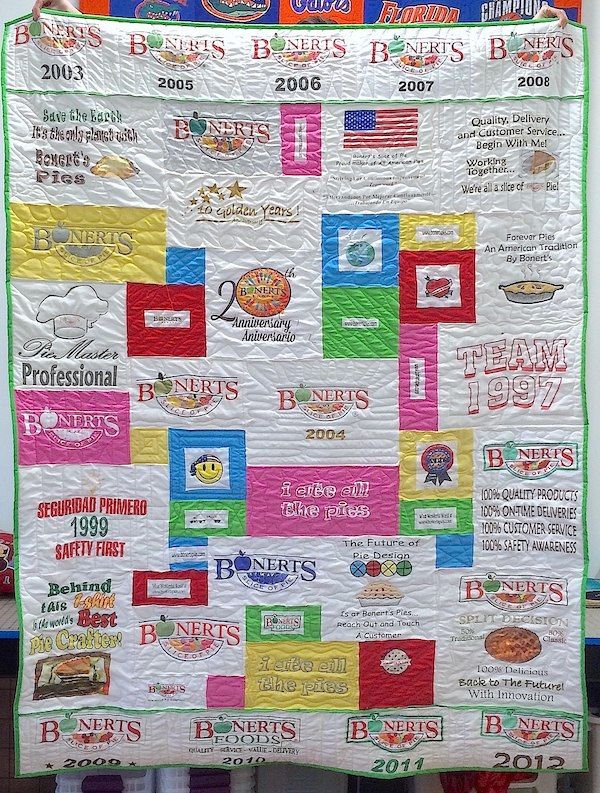
Andrea Funk is the inventor of T-shirt quilts made with multiple blocks sizes. The modern method of making T-shirt quilts. In 1992 she founded Too Cool T-shirt Quilts. Her life has been immersed in T-shirt quilts ever since.
